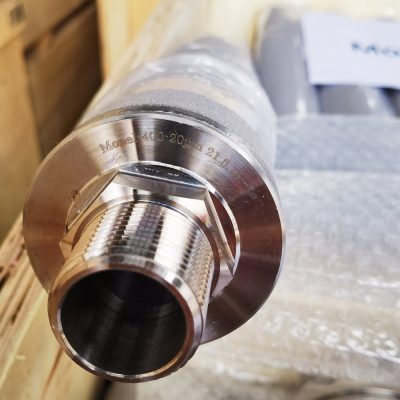Nuclear reactors in power plants use a large amount of fission nuclear fuel uranium. There are mainly three isotopes in the nature: U-238, U-235 and U-234, of which fissionable U-235 is currently the main nuclear fuel used now. However, the characteristics of natural uranium ore are low grade, scattered ore body and small scale in quantity. Normally if the uranium content is higher than 0.05%, that would be with mining value. So how does uranium go from ore to the usable nuclear fuel? Now let’s look at that how nuclear fuel is “Refined”.
After the uranium ore is mined, it is crushed and ground into fine powder, and the useful components in the ore are converted into soluble compounds by chemical reagents, and then selectively dissolved to obtain a solution containing the useful components. Uranium is then purified and recovered from the ore leachate. The obtained chemical concentrate, this primary product has a bright yellow color, so it is also called “yellow cake”, which is generally diuranate or uranyl tricarbonate. Further purification and transformation work is required. The uranium concentrate is refined and nuclear-pure uranium compounds are obtained. At present, the solvent extraction method has completely replaced the precipitation method adopted earlier.
First, the “yellow cake” is dissolved in nitric acid to produce a solution of uranyl nitrate. The diuranate solid prepared by hydrometallurgy dissolves very quickly in nitric acid, and only a small amount of residue remains after the reaction. The undissolved residue was removed by filtration, and the filtered solution contained excess nitric acid and nitrates.
Resolvent extraction method is used for purification. At present, uranium refineries have adopted the TBP extraction process. TBH has the characteristics of low volatility, chemical stability and large extraction capacity. After washing the uranium-loaded organic phase with water, the uranium is back-extracted with slightly acidic hot water to obtain a nuclear-pure uranyl nitrate solution.
Then, the extracted and purified uranium is reacted with uranyl nitrate and ammonia to produce ammonia diuranate precipitation, and then uranium trioxide is obtained through processes such as filtration, drying and calcination. Uranium dioxide is obtained by hydrogenation reduction, which can be used as a raw material for the production of other uranium compounds, and can also be directly used as a nuclear reactor dye, but as a reactor dye directly, the reduction reaction requires a higher temperature to produce denser uranium dioxide.
Uranium hexafluoride is the raw material for the separation of uranium isotopes. When preparing uranium hexafluoride, it is necessary to react uranium dioxide and hydrogen fluoride at 500 °C to obtain uranium tetrafluoride first, and then react with fluorine at 300~350 °C to obtain uranium hexafluoride. Several uranium isotope separation methods currently in practice use uranium hexafluoride as the working medium. However, whether it is a product or a tailing material, it must be converted into a material in the form of uranium dioxide for use as a nuclear dye. Therefore, both the production and reduction of UF6 are called transformations.
In the extraction purification and high temperature reaction, the special alloy Monel®-400, Inconel®-600 and 316L produced by Nanjing Shinkai are used. It is also widely used in the treatment of nuclear waste and water filtration.
In the extraction purification, high temperature reaction and harsh chemical environment, the special nickel alloy Monel®-400, Inconel®-600, and Hastelloy® C-276 porous metal membrane (sometimes SS304L) produced by Nanjing Shinkai could be used to achieve the corrosive resistant. It is also widely used in the treatment of nuclear wastewater filtration or corrosive gases like HF(Hydrofluoric Acid). The standard micron grade or minimum particle removal would be 5 micron or 20 micron, etc. For the dimensions of cylinder such as outside diameter, thickness, length and connection/ fittings, there’s no limitation, all cartridges could be customized based on clients’ request. Shinkai has full tool/ molds to meet different size requests.

